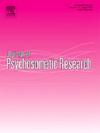Development and clinimetric validation of the Brief Brain Fog Scale (BBFS) for post-COVID cognitive symptoms
IF 3.3
2区 医学
Q2 PSYCHIATRY
引用次数: 0
Abstract
Objectives
To develop and clinimetrically validate the Brief Brain Fog Scale (BBFS), a concise self-report tool for assessing post-COVID-19 cognitive symptoms, and to evaluate its structural validity, reliability and precision.
Methods
The BBFS was generated from literature and expert review and finalized as five items targeting core brain-fog symptoms.A total of 844 participants completed an online cross-sectional survey, including 686 with self-reported post-COVID brain fog and 158 healthy controls. Rasch modeling and Mokken scaling were used to examine unidimensionality, item fit, person reliability, and item scalability. Local independence and differential item functioning (DIF) were assessed across age, sex, and education groups.
Results
The BBFS fit Rasch model expectations (χ2 = 44.6, df = 60, p = 0.928) and showed strong scalability (Mokken H = 0.679). Reliability was high (PSI = 0.846; WLE reliability = 0.846; EAP reliability = 0.852), with optimal precision in the moderate symptom range. All items had acceptable Infit MNSQ values (0.5–1.5), though several exhibited elevated Outfit in the highest response category. Local independence was largely supported; one pair marginally exceeded the indicative Q3⁎ threshold (0.204), and none exceeded 0.30. Uniform DIF was identified across age, sex, and education. Two items showed lower thresholds in older respondents, two showed higher thresholds in females, and four showed lower thresholds in postgraduate respondents. ‘Forgetful’ did not exhibit education-related DIF.
Conclusions
The BBFS is a reliable, unidimensional instrument for post-COVID brain fog, with robust measurement properties supported by Rasch and Mokken analyses. Although some items showed demographic sensitivity, the total scale functioned consistently across groups. The BBFS represents a potentially valid and practical screening instrument. Future work should examine longitudinal responsiveness, cross-cultural generalizability, and item refinements.
针对covid - 19后认知症状的简短脑雾量表(BBFS)的开发和临床验证
目的开发并临床验证一种评估新冠肺炎后认知症状的简明自我报告工具——简易脑雾量表(BBFS),并评估其结构效度、信度和准确性。方法根据文献资料和专家评审,将BBFS确定为针对核心脑雾症状的5个项目。共有844名参与者完成了一项在线横断面调查,其中包括686名自我报告的covid后脑雾和158名健康对照。使用Rasch模型和Mokken量表来检验单维性、项目契合度、人的可靠性和项目可扩展性。局部独立性和差异项目功能(DIF)在不同年龄、性别和教育程度的人群中进行评估。结果BBFS符合Rasch模型期望(χ2 = 44.6, df = 60, p = 0.928),具有较强的可扩展性(Mokken H = 0.679)。信度较高(PSI = 0.846; WLE信度= 0.846;EAP信度= 0.852),在中度症状范围内精度最佳。所有的项目都有可接受的Infit MNSQ值(0.5-1.5),尽管有几个项目在最高反应类别中表现出较高的Outfit。地方独立在很大程度上得到支持;1对略微超过指示性Q3阈值(0.204),没有一对超过0.30。统一的DIF在年龄、性别和教育程度上都得到了识别。年龄较大的受访者中有2项阈值较低,女性中有2项阈值较高,研究生受访者中有4项阈值较低。“健忘”没有表现出与教育相关的DIF。结论BBFS是一种可靠的一维脑雾测量仪器,具有Rasch和Mokken分析支持的稳健测量特性。虽然有些项目显示出人口敏感性,但总体量表在不同群体之间的作用是一致的。BBFS是一种潜在的有效和实用的筛查工具。未来的工作应检查纵向反应,跨文化的普遍性,和项目的细化。
本文章由计算机程序翻译,如有差异,请以英文原文为准。
求助全文
约1分钟内获得全文
求助全文
来源期刊
CiteScore
7.40
自引率
6.40%
发文量
314
审稿时长
6.2 weeks
期刊介绍:
The Journal of Psychosomatic Research is a multidisciplinary research journal covering all aspects of the relationships between psychology and medicine. The scope is broad and ranges from basic human biological and psychological research to evaluations of treatment and services. Papers will normally be concerned with illness or patients rather than studies of healthy populations. Studies concerning special populations, such as the elderly and children and adolescents, are welcome. In addition to peer-reviewed original papers, the journal publishes editorials, reviews, and other papers related to the journal''s aims.

 求助内容:
求助内容: 应助结果提醒方式:
应助结果提醒方式:


